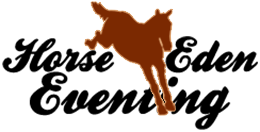Please do not post
.
This thread is complementary to my adopt shop, Velvet Island Dragons! It explains the breeding system and documents the genetic makeup of dragons bred so far. I'd like to keep this thread nice and neat, so if you have any questions or requests, please direct them to the adopt shop thread or PM them :) .
VID genetics roughly mimic those in real life (and HEE!), so if you already understand how it works you can skip this first post <3
Certain traits such as base colour and additional colours will simply be some combination of the parent's traits. Other traits are random mutations which do not depend on genetics. Other than that, I will explain genetics very poorly...
.
Markings are based on a genetics system! Each marking is encoded by a gene (eg. gradient). A gene is made up of two alleles (eg. Gdgd) - when written, the dominant allele is uppercase (eg. Gd), and the recessive allele is lowercase (eg. gd).
.
A VID with two of the same allele for a trait is homozygous, either dominant (eg. GdGd) or recessive (gdgd). A VID with two different alleles for a trait is heterozygous (eg. Gdgd). Each parent will randomly pass along one of their two alleles for each and every gene. For homozygotes, it will always be the same allele (they have two copies of the same), but for heterozygotes it will be a 50% chance at passing the dominant or recessive allele.
.
The combination of alleles is called the genotype, such as GdGd, Gdgd, or gdgd. The way the genotype actually looks on the VID is called the phenotype, such as "gradient" or "not gradient".
.
Phenotype can be based on either the dominant allele, needing at least one copy of the uppercase to present itself (eg. GdGd or Gdgd), or the recessive allele, needing both copies of the lowercase to be visible (eg. mbmb). For recessive alleles, individuals with only one copy of the lowercase are carriers - they don't display the trait themselves, but can pass it along to their offspring (eg. Mbmb).
.
For simplicity, only genes of interest will show up in a VID's genetic report, but they do all have the whole genome.
.
"Autosomal" for our purposes simply means both males and females can have it. I don't plan on adding sex-linked traits, so you can ignore this term.
.
Let's run through the probabilities when breeding for a dominant trait, such as gradient (Gd):
.
[Parent x Parent genotypes: Offspring genotype (offspring phenotype)]
GdGd x GdGd: 100% GdGd (100% gradient)
GdGd x Gdgd: 50% GdGd, 50% Gdgd (100% gradient)
GdGd x gdgd: 100% Gdgd (100% gradient)
Gdgd x Gdgd: 25% GdGd, 50% Gdgd, 25% gdgd (75% gradient, 25% not)
Gdgd x gdgd: 50% Gdgd, 50% gdgd (50% gradient, 50% not)
gdgd x gdgd: 100% gdgd (100% not)
.
.
The genotypic probabilities for recessive traits are exactly the same, but the probabilities of the trait being visible (aka, the phenotype) are different. Let's run through this again with a recessive trait, like marble (mb):
MbMb x MbMb: 100% MbMb (100% not)
MbMb x Mbmb: 50% MbMb, 50% Mbmb (100% not)
MbMb x mbmb: 100% Mbmb (100% not)
Mbmb x Mbmb: 25% MbMb, 50% Mbmb, 25% mbmb (75% not, 25% marble)
Mbmb x mbmb: 50% Mbmb, 50% mbmb (50% not, 50% marble)
mbmb x mbmb: 100% mbmb (100% marble)
.
As you can see, breeding for recessive traits is a bit tougher. I will include on their genetic report whether or not a VID is a carrier, so that should help you strategize if this is your goal.
.
In many cases, homozygous dominant traits can present as a more complex or extreme marking, but this isn't guaranteed. There is also no limit to how many different types of markings a VID may have, so have fun!


